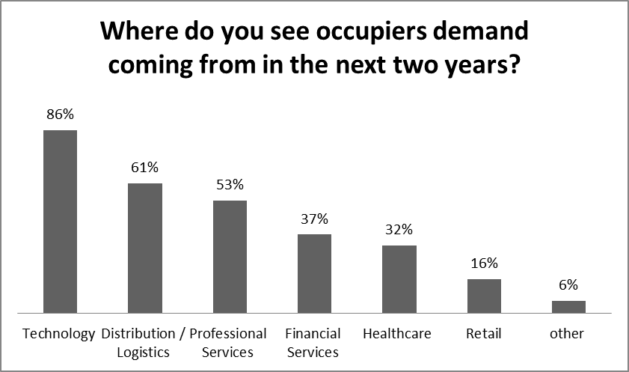Bricking it: what’s the future for real estate?
The property sector is set to have its own Renaissance. Here, I explain how digital is transforming the landscape and why its risks could be as huge as climate change for the industry.
We all know the Renaissance transformed the world of art. Now the internet is having its own Renaissance – with commerce today experiencing a similar effect to that of 15th century art. As an increasing number of businesses move their products and services online, connectivity is fast becoming the heartbeat of our modern economy.
It’s the rise of Cloud applications disrupting the enterprise software market; cryptocurrency reinventing our monetary system; online shopping challenging the established model of the ‘high street’.
For landlords, the challenge is how their real estate assets can meet the needs of tenants – both today and into the future. The digital revolution is not only transforming our lives, but also the bricks and mortar in which we trade.
The perils of getting it wrong
Connectivity can pose a threat to the investment performance of your real estate assets. Professor Robert Kaplan of Harvard Business School suggests that when it comes to property values, access to the internet over fibre is quickly becoming more important than transport links. And with billion-dollar tech unicorns materialising from code on a laptop, it’s hard to argue against him.
You can draw parallels between technological risk and another disruptor: climate change. The real estate industry has made notable efforts and investments to mitigate the dangers that climate change poses to its business. For firms who’ve adopted environmental, social and governance policies, this active management has resulted in greater returns. So, managing the risks posed by technology in much the same way is likely to offer rich rewards to those who are quickest off the mark.
Connectivity is a resilience issue for property. Working with landlords to manage this issue goes a long way to futureproofing assets for the digital tenants of tomorrow.
The new occupier landscape

Source: Nabarro ‘UK Real Estate in the Digital Age’ report
A recent report by Nabarro, ‘UK Real Estate in the Digital Age’, highlighted the need for best-in-class connectivity. The report canvased 300 real estate professionals who collectively manage over £350bn of real estate investments.
The trend is clear – technology companies large and small will make up a significant chunk of the real estate market. However, it’s not only tech companies; all businesses now require fast connectivity.
Enter proptech
Alongside the vibrant start-up scene, proptech – property technology – is having a similar resurgence. An industry one could argue hasn’t needed to change, mainly because of the old adage “if it ain’t broke, don’t fix it”, now finds itself facing the headwinds that new technology can bring.
So what exactly is proptech? It’s simply the software applications and platforms used by different stakeholders – investors, lenders, property managers, as well as tenants or buyers – in the real estate industry.
In 2016, there was a record high for propech funding, bringing the total amount raised to almost £5.2bn across 817 deals since 2012.
Let there be internet
Upon moving into a new office, tenants expect light, heating and water, but in most instances have to wait for the right internet connection. Connectivity is fast becoming the fourth utility, but a step change is needed to ensure tenants aren’t trying to run their businesses using nearby public Wi-Fi or a 4G dongle.
In my own role, I’ve helped forge partnerships with landlords to reduce lead time on fibre to their premises and future-proof their assets from a connectivity perspective. Standardising wayleave agreements can help. And we’re partnering with the UK commercial real estate industry to deliver a new and efficient way of enabling the connected building.
In bandwidth, small is seldom beautiful
To sum it all up, as we move into a time where digital begins to outweigh the physical, connectivity becomes crucial. For the foreseeable future, location, location, location is still paramount. But ignoring how these spaces interact with the digital world is no longer an option.
For more insights and tips for businesses from Virgin Media Business click here
Selected industry experts bring you insight and expert advice, across a range of sectors.
Subscribe for free to receive our fortnightly round-up of property tips and expertise
Selected industry experts bring you insight and expert advice, across a range of sectors.
Subscribe for free to receive our fortnightly round-up of property tips and expertise



